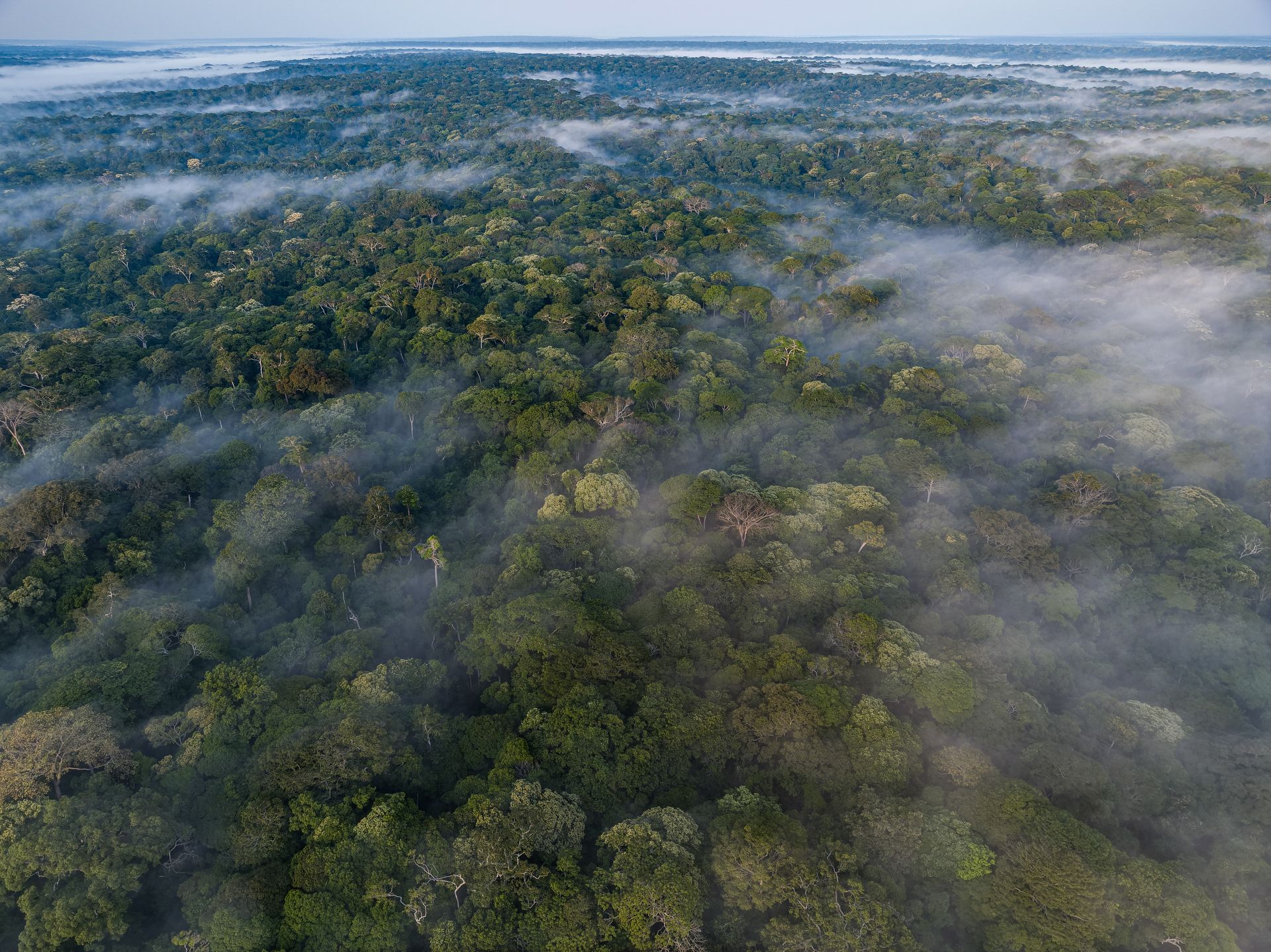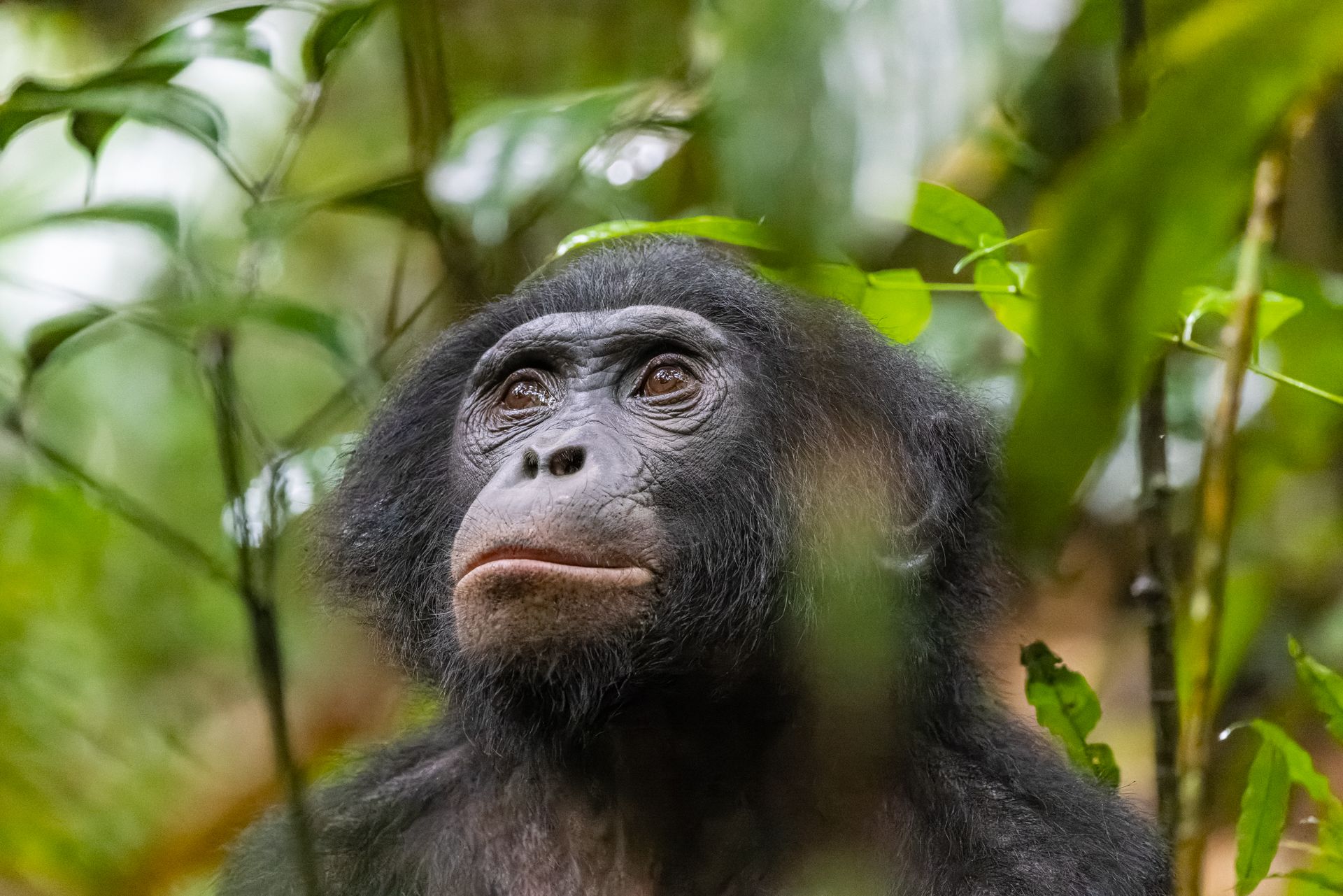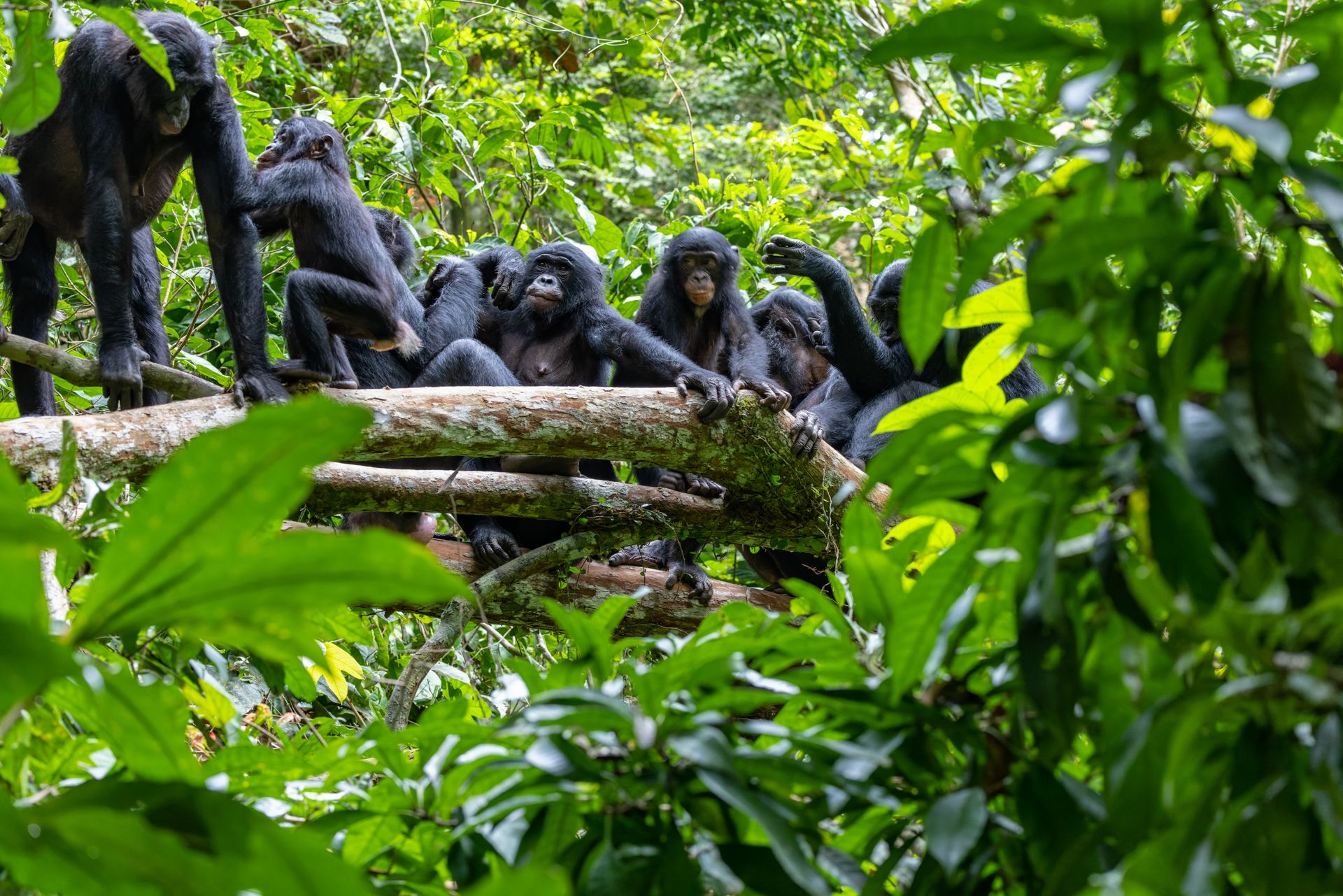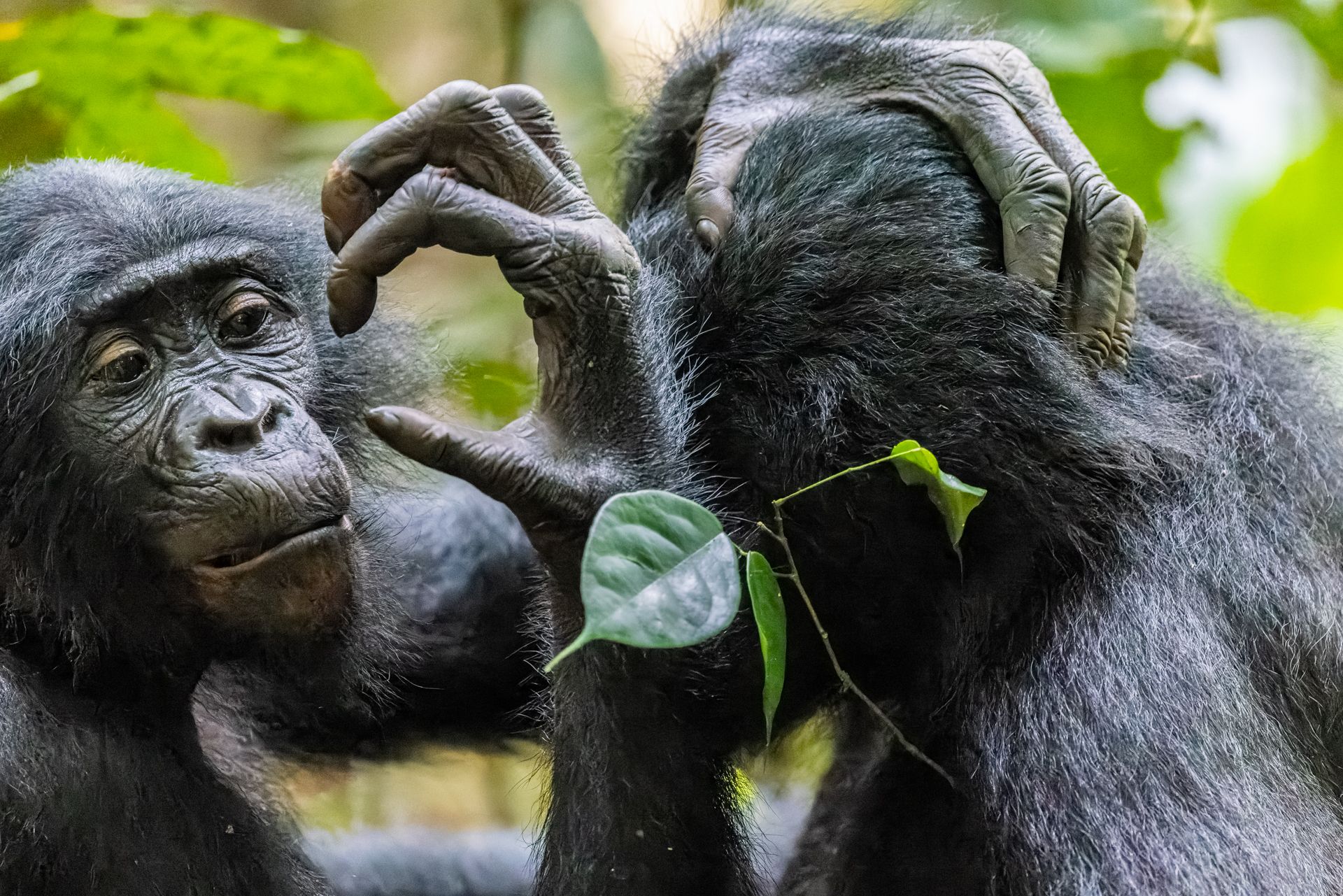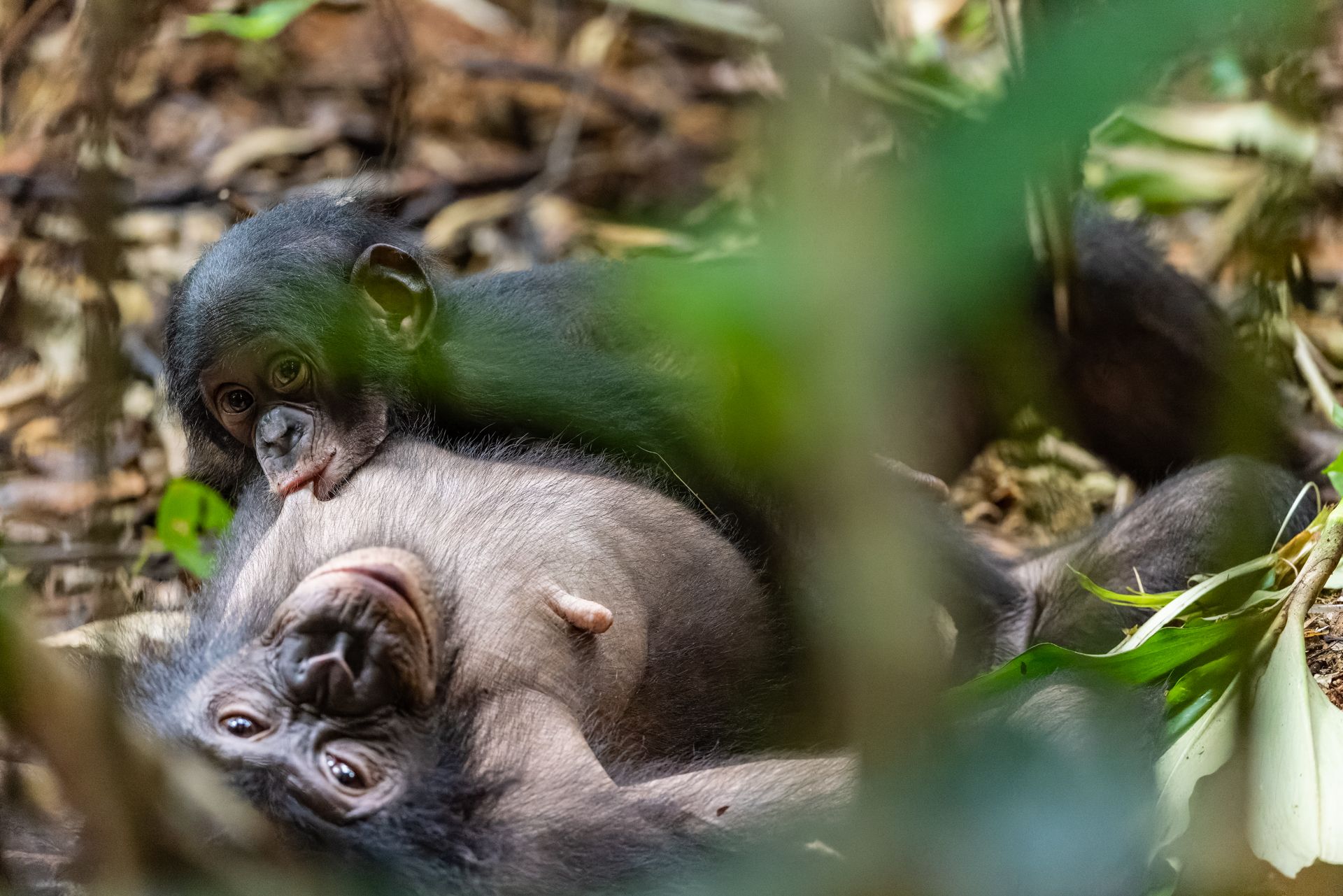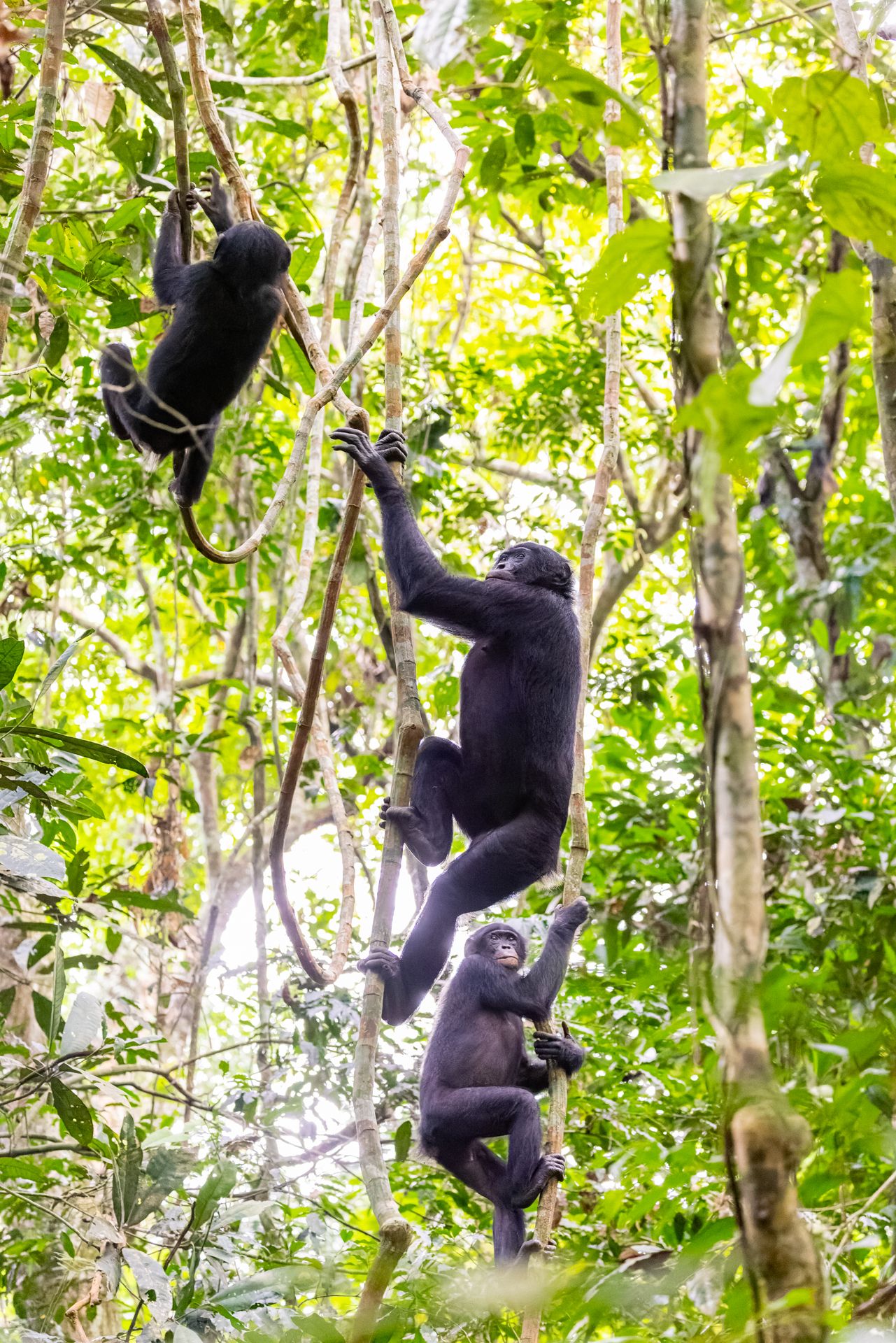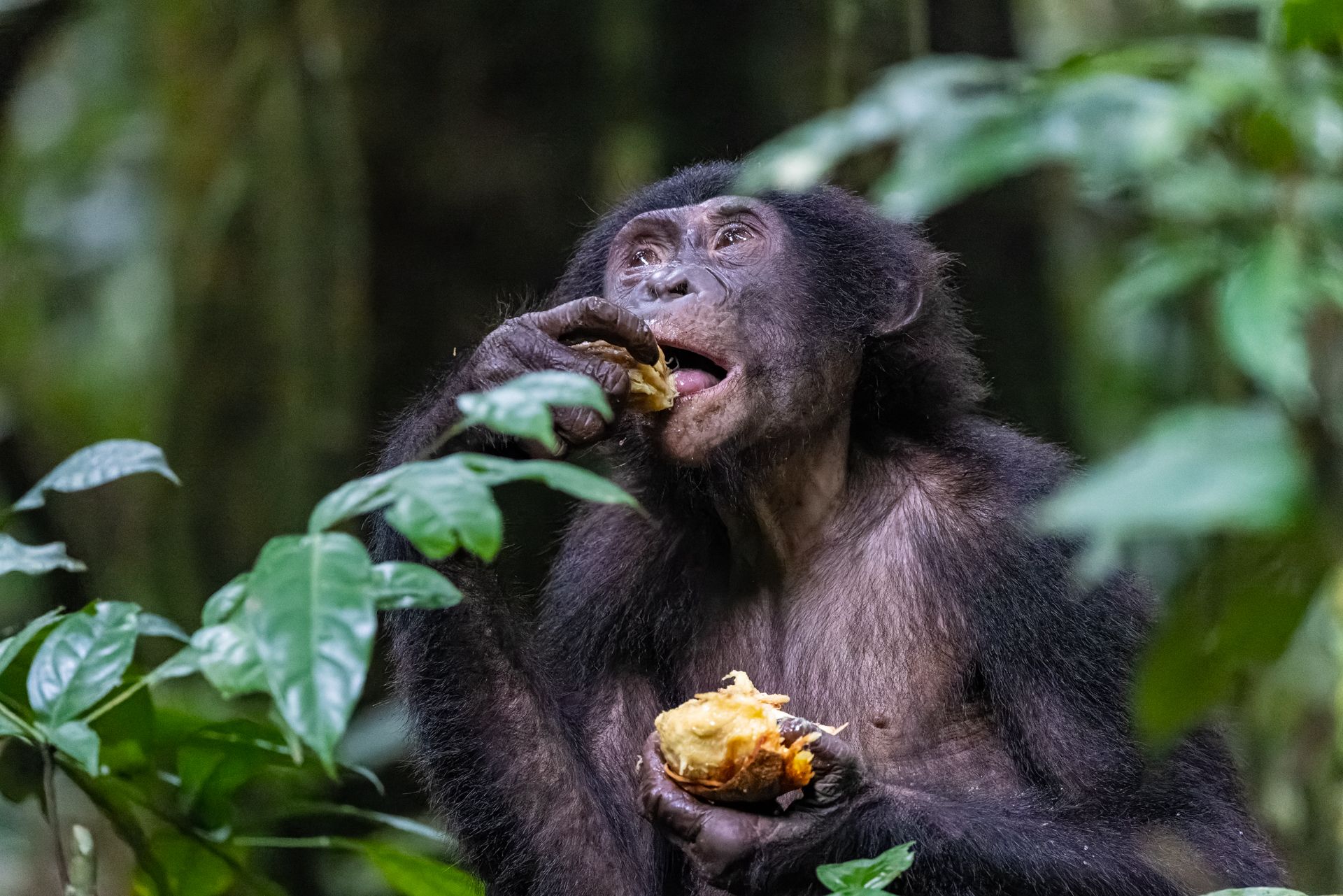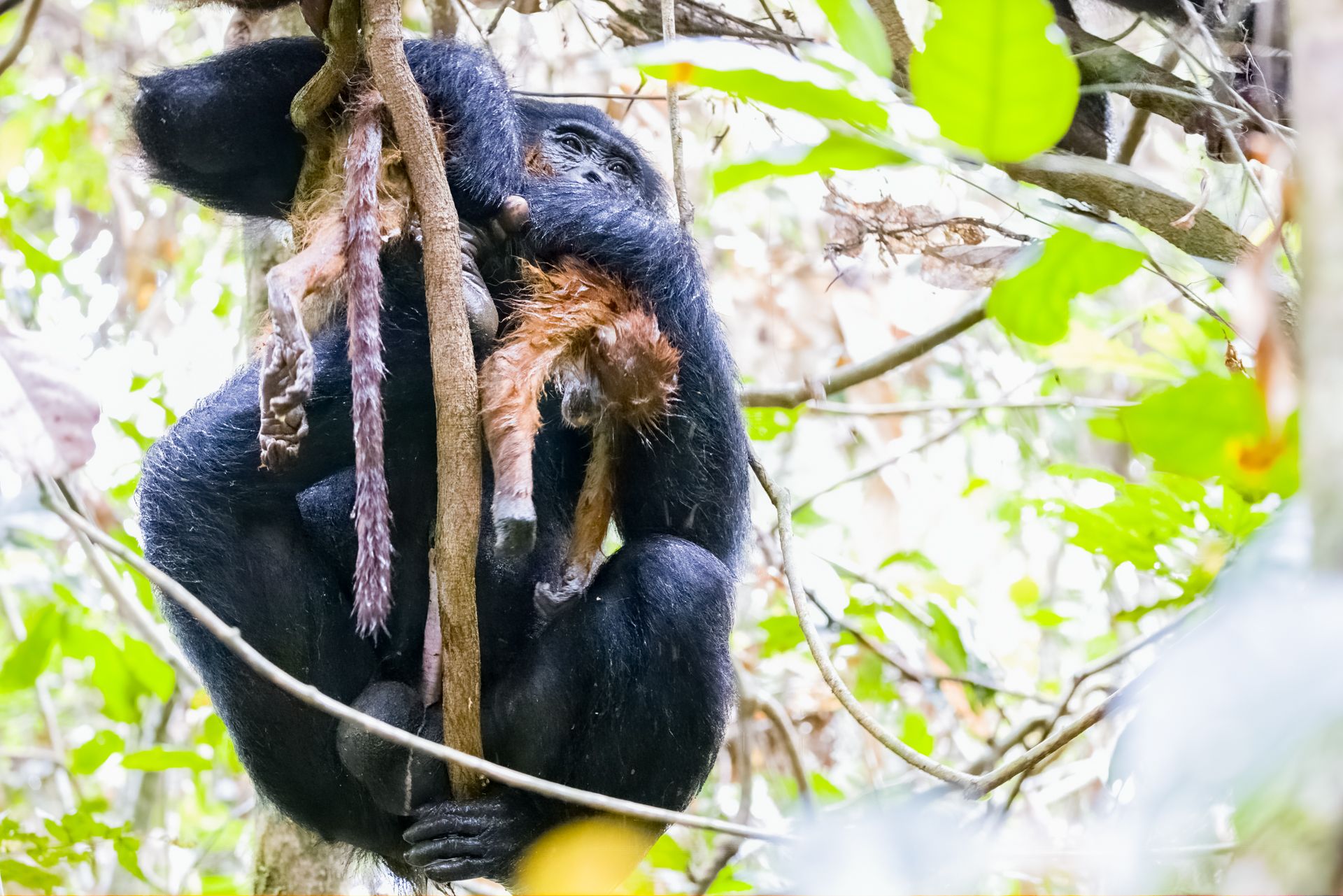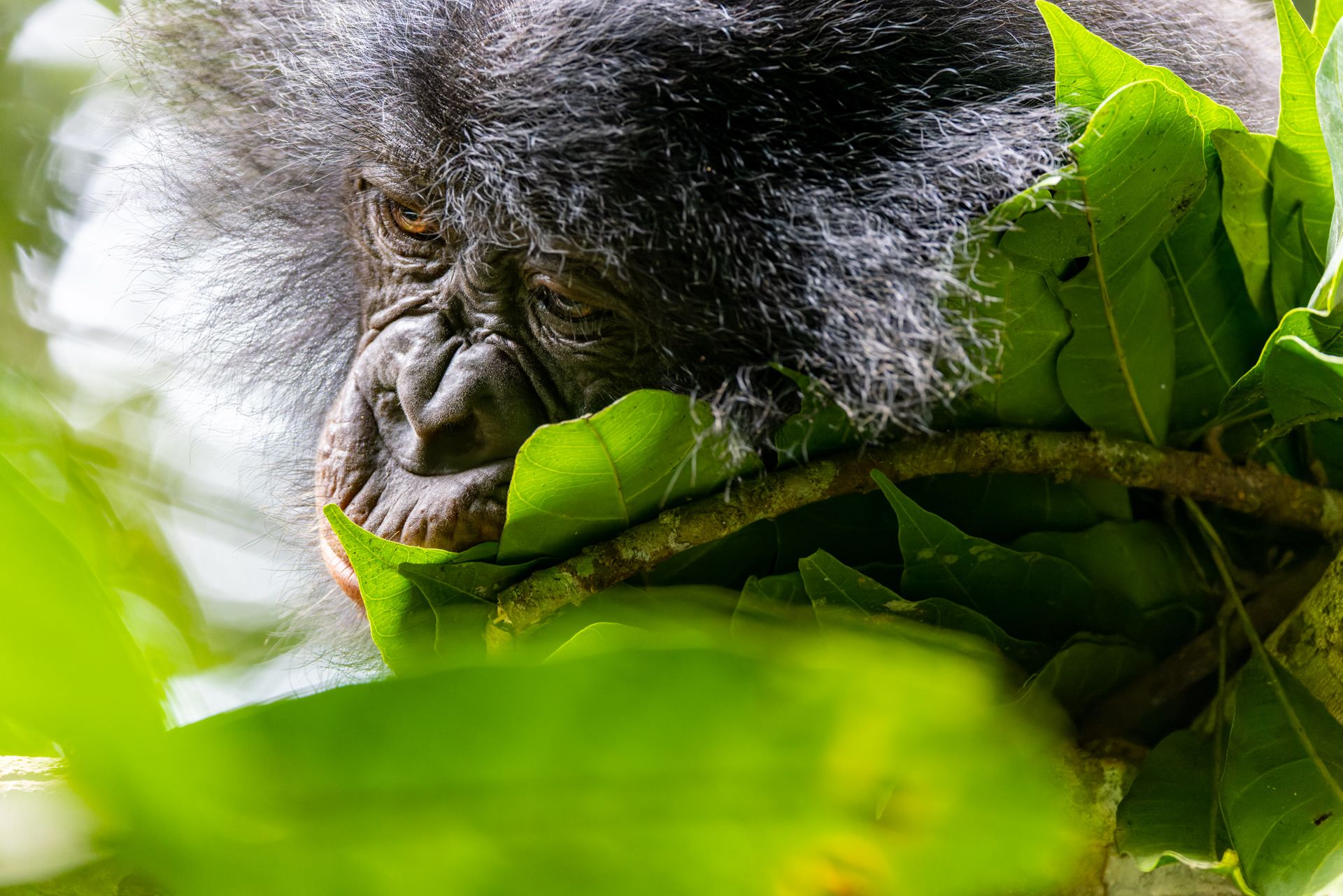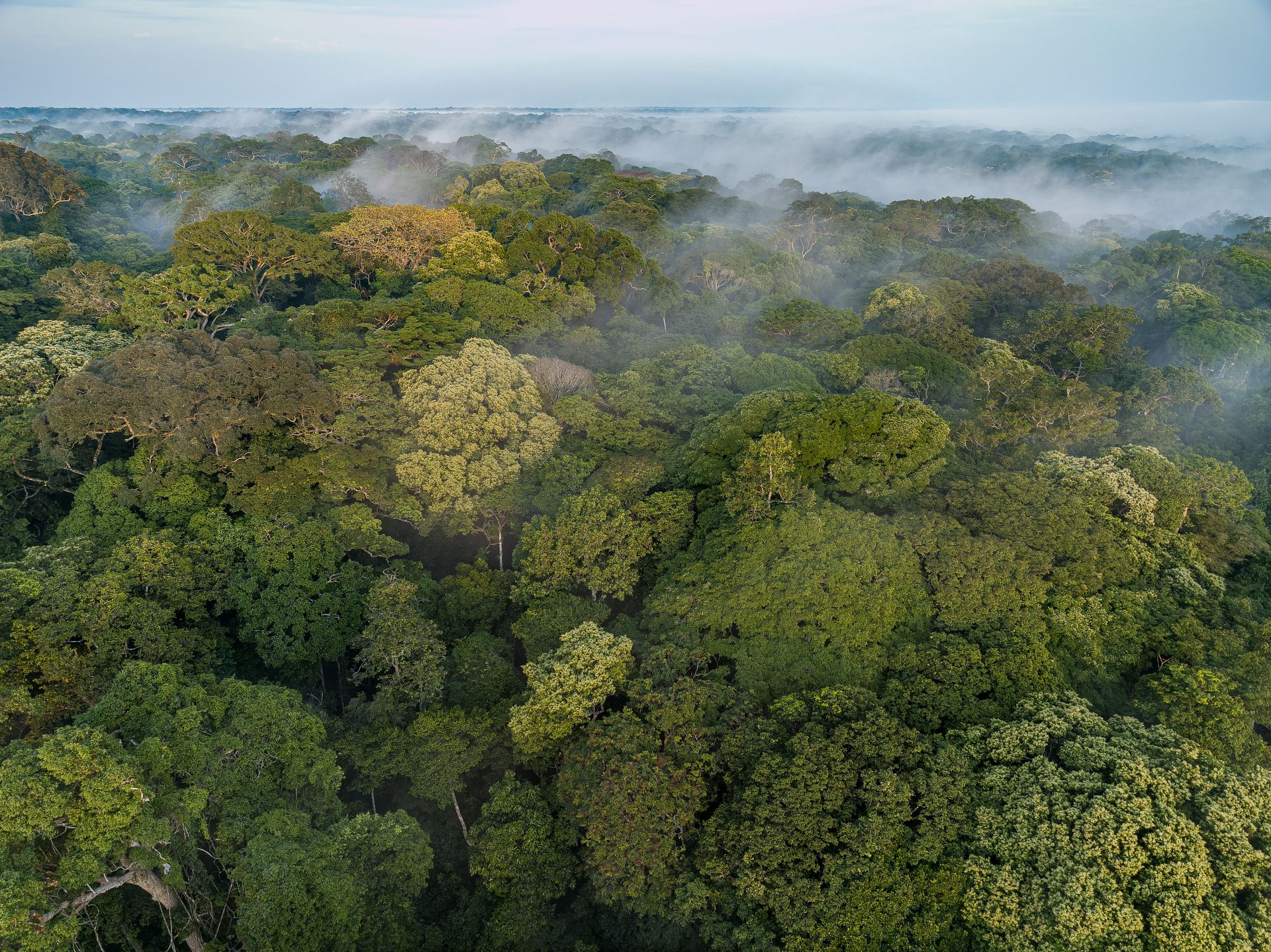Bonobo in the wild 21/22
There are not many places in the world where you can photograph wild bonobos - our closest living relative. Bonobos live only in the dense tropical forests south of the Congo River in Central Africa, and to the north of the Congo river - separated by this enormous flat, brown expanse of water - live their cousins, the chimpanzees. Bonobos are shy, secretive and incredibly agile in their forest homes, so that it is almost impossible to photograph in the wild, but at Lui Kotale research camp deep in Salonga National Park it is possible. German researchers, Barbara Fruth and her husband Gottfried Hohmann, have been studying wild bonobos for almost 30-years, and 16 years at Lui Kotale. Bonobos here are now more or less used to these strange humans that follow them noting every detail of their behavior - what they eat, how they interact and communicate, where they sleep. In September and October 2021, I spent six weeks following bonobos at Lui Kotale, getting a glimpse of their secret lives. At moments they seemed almost human; the familiarity of their hands or a certain curiosity in their eyes. At other times I felt like an onlooker into their peaceful world, embarrassed by my species, our history and, potentially, our inability to save them in the wild. Bonobos are endangered and protected by law but their numbers continue to drop as they are hunted for bush meat and the wildlife trade, and their habitat is lost. Perhaps just 15,000 of these beautiful animals remain in the wild. But our closest living relative lives here, and only here - south of the Congo River. If bonobos do not survive here, they will not survive anywhere.
